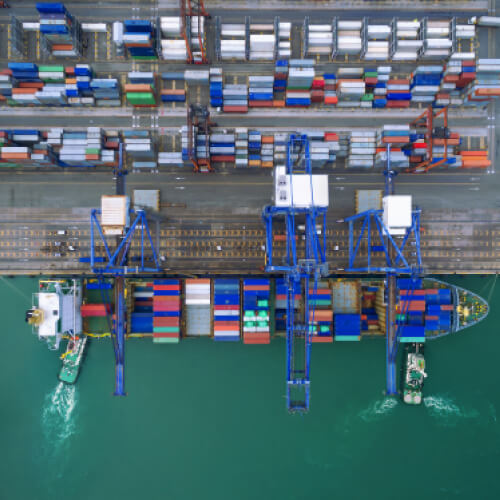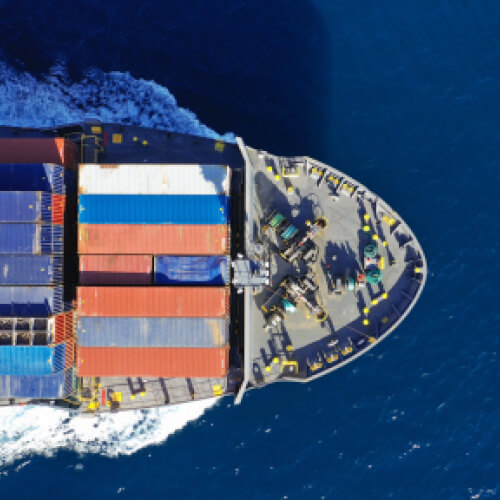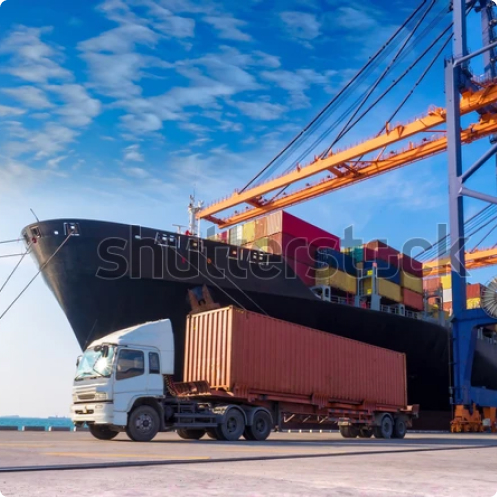In the landscape of international shipping, the term “Break Bulk” refers to a transportation method that, despite the evolution of containerized shipping, continues to play a crucial role for specific types of goods. It is a solution primarily used to ship large or irregularly shaped loads (which cannot fit inside a standard container) or heavy loads (which exceed the maximum payload of the container).
In this article by Savino Del Bene, we will explore in detail what Break Bulk is, how it works, which goods are most commonly transported, the differences compared to containerized shipping, and its main advantages.
What is Break Bulk?
Break Bulk is a maritime shipping method that involves transporting non-containerized goods. In other words, goods are loaded individually or in smaller load units such as crates, drums, pallets, or industrial machinery without the use of a container. This type of shipment is particularly suitable for bulky or irregularly shaped products such as machinery, pipelines, construction materials, and industrial equipment.
Among its main features, Break Bulk allows for greater flexibility in the loading and unloading of goods since there is no need to conform to the standardized dimensions of containers. Moreover, this method is ideal for out-of-gauge shipments, which exceed the dimensional limits of a standard container.
How does Break Bulk work?
In Break Bulk shipping, goods are loaded directly onto ships using port cranes or vessel’s crane. Each load unit is handled separately, with lifting and positioning operations requiring high technical skills and careful logistical planning. Break Bulk shipments can be stowed in the ship’s holds or on deck, depending on the type and characteristics of the cargo.
The logistics process of Break Bulk: preparation and loading
The entire logistics process of a Break Bulk shipment is divided into several phases, each requiring specific attention and skills. The first step is the preparation of the cargo, which requires careful and reinforced packaging capable of withstanding movement during loading and unloading operations. This step is essential to ensure product integrity and minimize the risk of damage.
This is followed by loading. Here, the cargo is lifted using specialized cranes, allowing goods to be positioned directly on the ship. This process is carried out following a predefined stowage plan designed to optimize space and ensure safety during transport.
Break Bulk logistics: stowage, securing, and unloading of goods
The process continues with stowage and securing. Once on board, the goods are stowed in the ship’s holds or on deck. During this phase, the loads are secured with straps, chains, and specific supports to prevent uncontrolled movements during navigation. The process ends with unloading at the destination port, where operations follow a predetermined order using specific equipment for lifting and moving the goods to the arrival terminal.
Savino Del Bene, with its expertise in maritime shipping, guarantees efficient coordination of all stages of the process, offering tailor-made solutions for every logistical need.
Break Bulk shipments: the most common goods
Break Bulk shipments are mainly chosen for bulky or complex-shaped cargo. Among the most common goods are:
- Industrial machinery and mechanical components: these machines, often bulky and heavy, cannot be divided into smaller parts for containerization. Break Bulk shipping allows them to be transported in a single block, avoiding repeated assembly and disassembly;
- Equipment for extraction and the oil industry: components such as drills, large pipes, drilling rigs, and floating platforms are transported using Break Bulk to avoid damage and ensure safe handling;
- Metal structures and building components: steel beams, reinforced concrete pillars, and sections of industrial constructions find an ideal shipping method in Break Bulk due to their non-standard length and dimensions;
- Pipes and materials for the energy industry: pipes used for large-scale infrastructure projects are moved in Break Bulk, facilitating loading and unloading operations;
- Large vehicles: trucks, buses, agricultural machinery, and heavy equipment are often too large (or too heavy) to fit in standard containers, making Break Bulk the ideal solution.
- Ships and boats: yachts, workboats, and large hulls are shipped via Break Bulk to preserve their structural integrity.
- Large paper rolls and bulk materials: materials such as paper rolls, sheets, and bulk products are handled in Break Bulk, allowing for safe and easy transportation.

Break Bulk vs. containerized shipping: what changes?
Break Bulk and containerized shipping differ in operational methods, types of goods that can be transported, and logistical flexibility. In Break Bulk, each load unit is handled individually using port cranes or vessel’s crane, requiring precise coordination and longer handling times compared to containerized shipping, where containers are moved in bulk with automated cranes, reducing wait times. As mentioned, this method is particularly suitable for out-of-gauge, bulky, and non-standard goods such as industrial machinery, large pipes, and oil equipment, while containerized shipping is more suited to standardized, stackable, and packaged goods like finished products and consumer goods.
The operational costs of Break Bulk tend to be higher due to manual handling and the need for stronger packaging. However, for exceptional or oversized loads, this method remains the only viable option, compensating for the higher costs with the ability to ship otherwise unmanageable goods. Another advantage of Break Bulk is access to smaller ports that are not equipped for containerized shipping, increasing the capillarity of logistical routes. Finally, it offers a higher level of flexibility compared to container shipping, allowing the transportation of loads that do not conform to standard container dimensions and ensuring direct control at every stage of handling, which is essential for the safety of delicate and bulky goods.
| Aspect | Break Bulk | Containerized Shipping |
| Loading and unloading | Manual or with cranes, individually | Standardized, fast, and automated |
| Transportable goods | Bulky, out-of-gauge, heavy | Standardized and stackable goods |
| Loading times | Longer and more complex | Faster and synchronized |
| Management costs | Higher for handling and stowage | Lower due to standardization |
| Port access | Even smaller, non-containerized ports | Requires dedicated infrastructure |
| Flexibility | High, ideal for bulky goods | Limited to container dimensions |
Advantages of Break Bulk
Choosing Break Bulk shipping presents several advantages over containerized methods, especially for bulky, out-of-gauge, or irregularly shaped goods. Here are the main ones:
- Flexibility in size and shape of transported goods: unlike containerized shipping, Break Bulk allows for the movement of loads with non-standard sizes and shapes. This enables the transport of machinery, pipelines, industrial materials, and building components without having to fit them into container size limits;
- Possibility to ship out-of-gauge cargo: Break Bulk shipments are the ideal option for so-called Out of Gauge (OOG), or loads that exceed the dimensions of a standard container. This includes building materials, industrial plants, and heavy equipment that could never be stowed in a standard container;
- Greater versatility in loading and unloading operations: Break Bulk goods can be loaded and unloaded using port cranes or vessel’s crane, without the need for specific infrastructure. This allows easier access to smaller ports and facilitates operations even in areas not equipped for container shipping;
- Adaptability to large-scale industrial projects: Break Bulk is particularly useful for large industrial projects, such as the construction of energy plants, civil infrastructure, and extraction projects. The size and weight of the goods involved make this method the only practical choice to ensure safe and timely delivery;
- Access to smaller ports not equipped for container shipping: unlike containerized shipments, Break Bulk does not necessarily require large port terminals, making it possible to reach more remote and less accessible destinations, offering a significant logistical advantage for international operations.
Conclusion
Break Bulk represents an efficient and versatile solution for international shipments of bulky and non-standardized goods. With the support of an experienced partner like Savino Del Bene, Break Bulk operations can be managed with precision and safety, offering fast timelines and tailored solutions. If you think you need high-level shipping services, get in touch with your local Savino Del Bene representative today.






